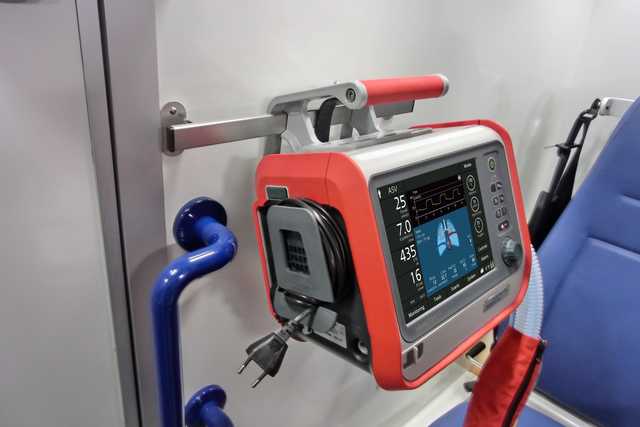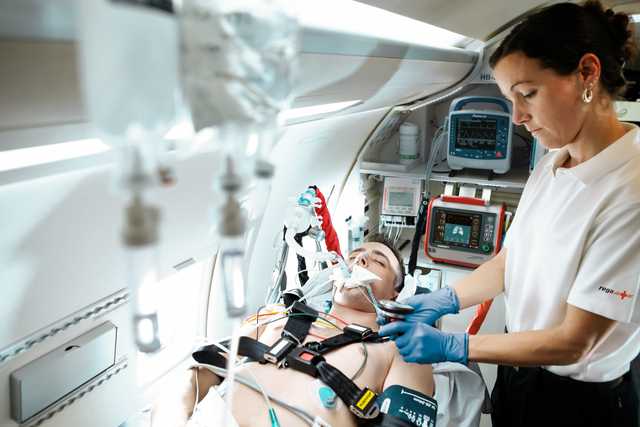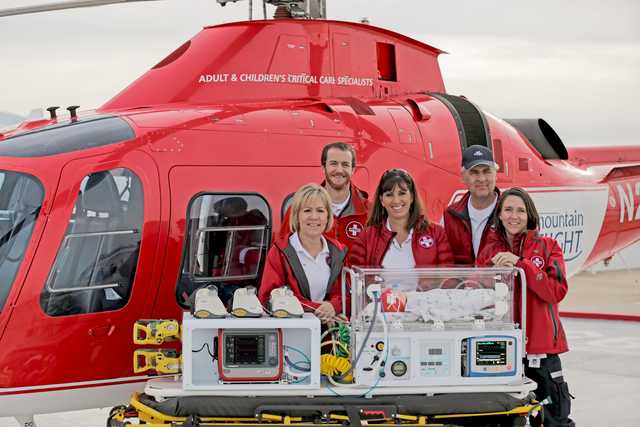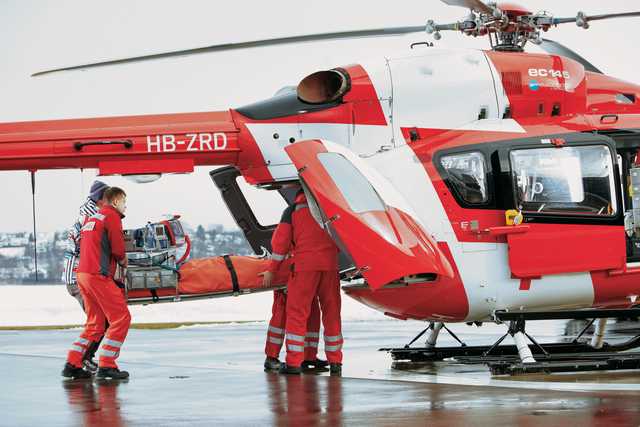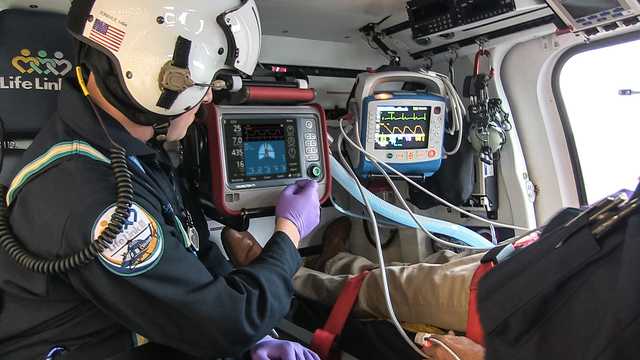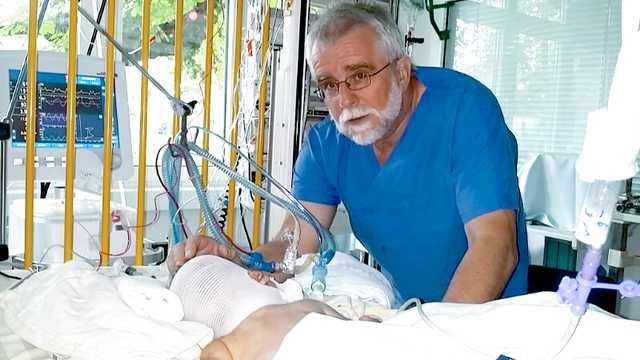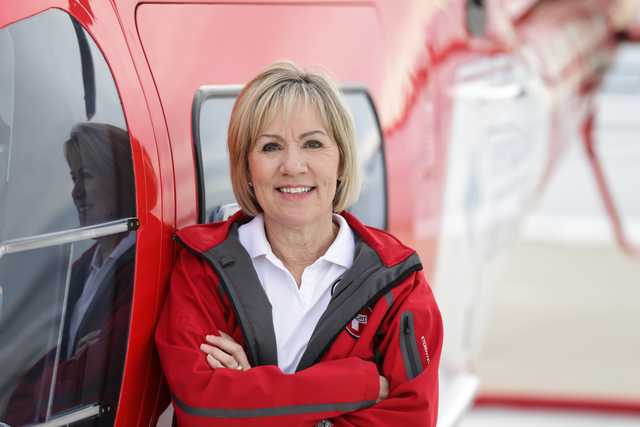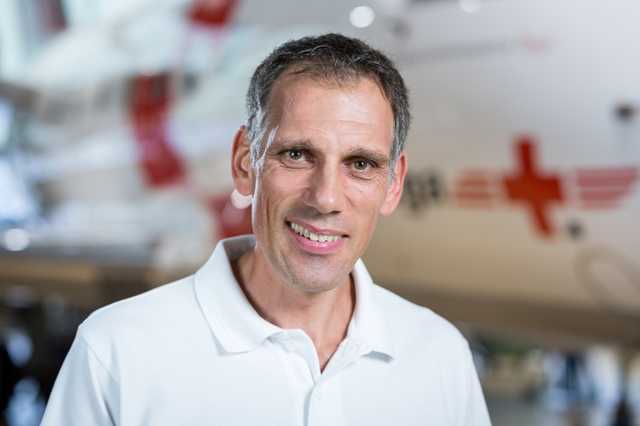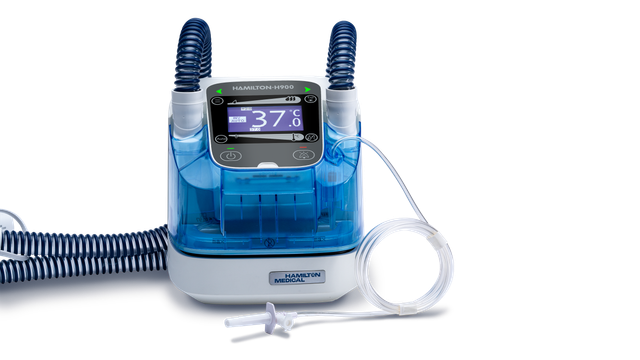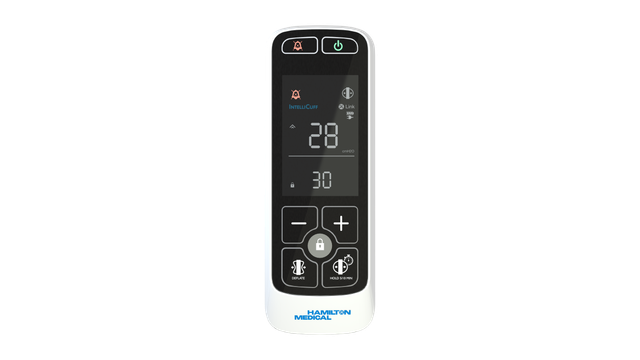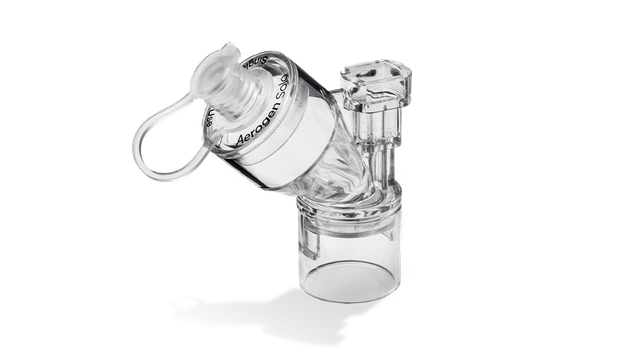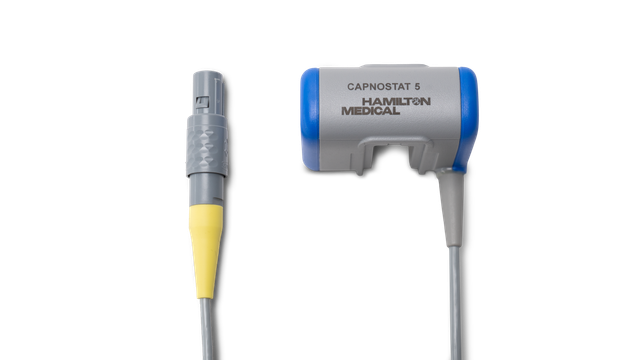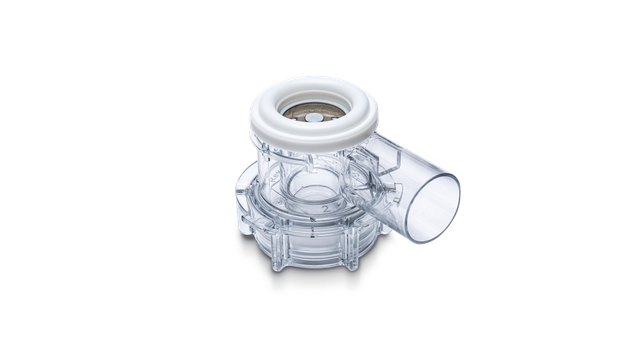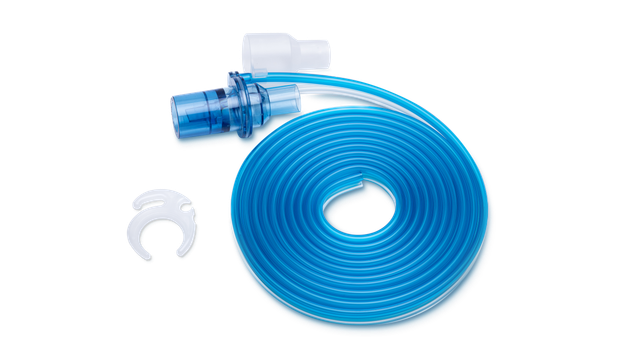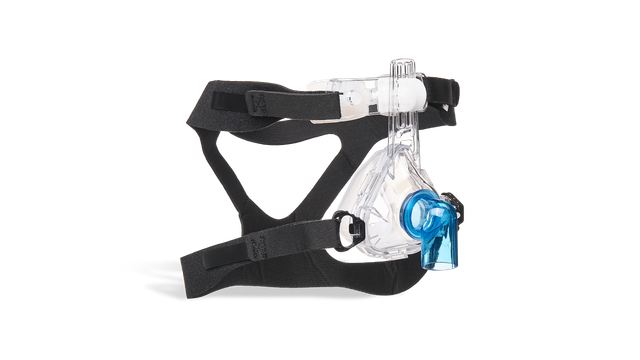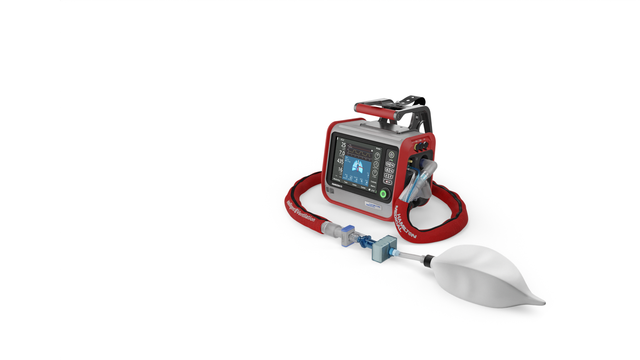
Nuestro especialista en traslados. Para pacientes de todas las edades

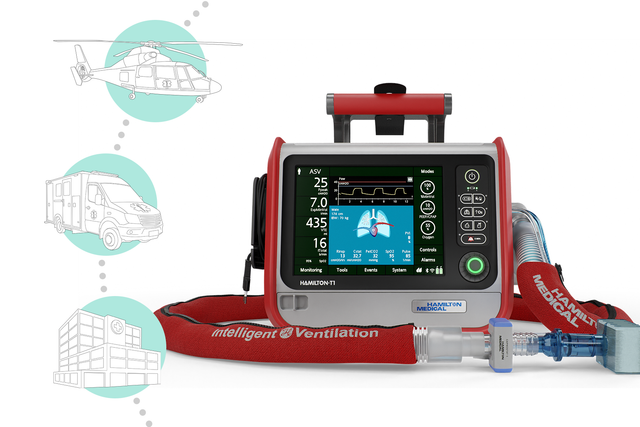
Nuestro especialista en traslados. Para pacientes de todas las edades
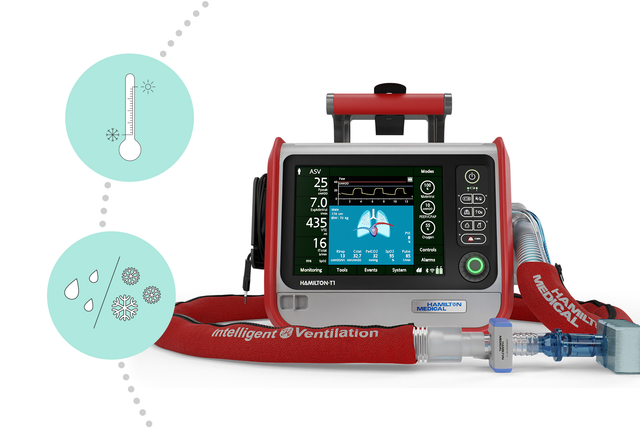
La ley del más fuerte. Para las condiciones más exigentes
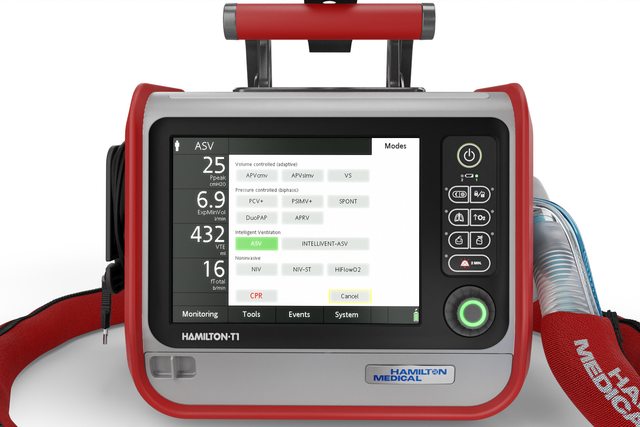
Tratamiento con ventilación continua. Utilice el mismo modo y los mismos ajustes que a pie de cama
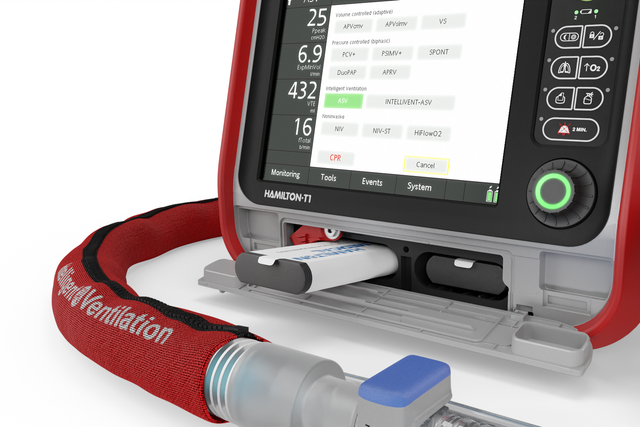
Extraordinariamente independiente. No requiere aire comprimido y funciona con batería
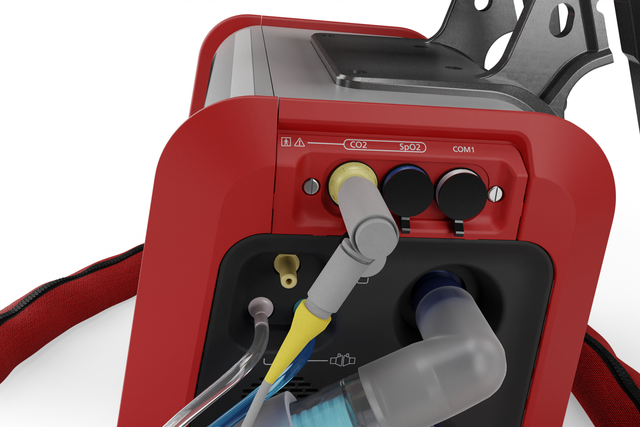
La comunicación es clave. Para una conexión optimizada
Tarjeta de comunicaciones opcional para:

Manténgase conectado. Sin ataduras
Obtenga acceso a los datos respiratorios en su dispositivo móvil con la aplicación Hamilton Connect. También proporciona herramientas diseñadas para facilitar y optimizar el flujo de trabajo de ventilación.
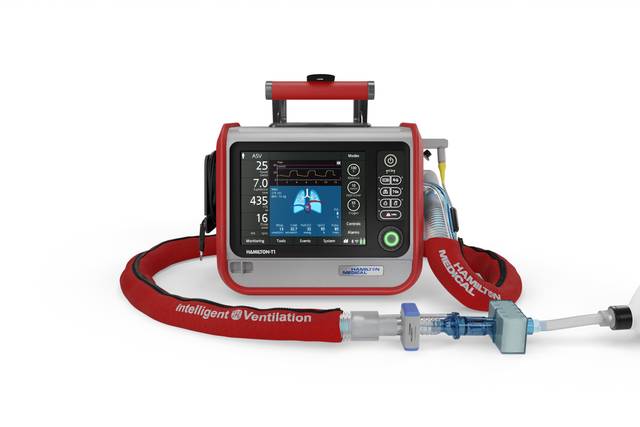
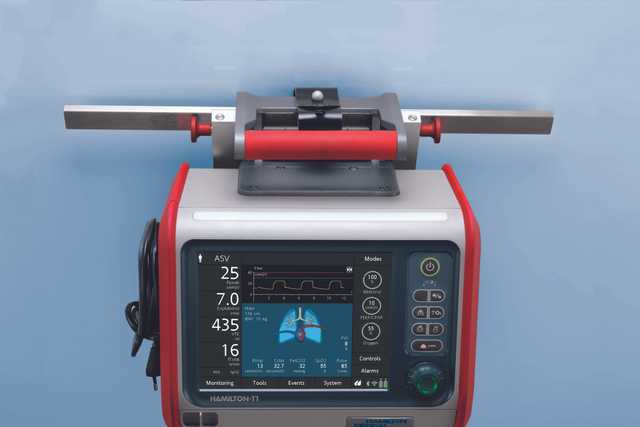
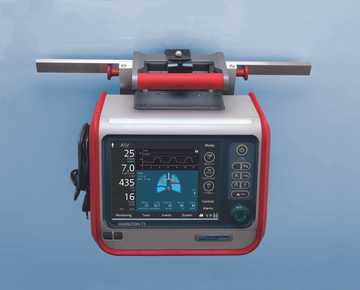
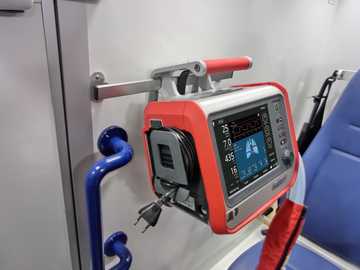
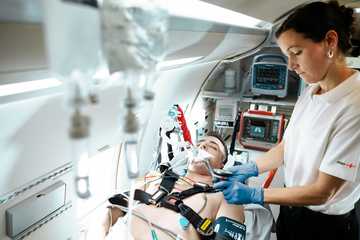
Abróchese el cinturón. Soluciones de montaje para traslados sin incidentes
Hay disponibles diversas soluciones para los principales tipos de helicópteros y ambulancias, así como para camas hospitalarias, camillas, superficies, repisas, goteros, raíles y techos.
Con cuatro tipos diferentes de ganchos y varios montajes, el HAMILTON‑T1 es un respirador portátil capaz de adaptarse a su situación y entorno específicos.
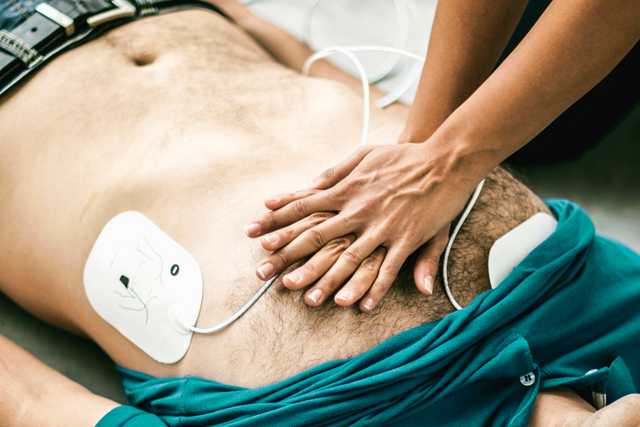
¡Código azul! Asistencia durante la RCP
La ventilación de la RCP se adapta a la configuración de ventilación si tiene que realizar una maniobra de RCP. Muestra los parámetros principales de monitorización y las curvas correspondientes a la situación, además de ayudarle en su flujo de trabajo mediante el acceso rápido a los ajustes preconfigurables, el ajuste adecuado de alarmas y disparos, y la pantalla de temporizador de RCP.
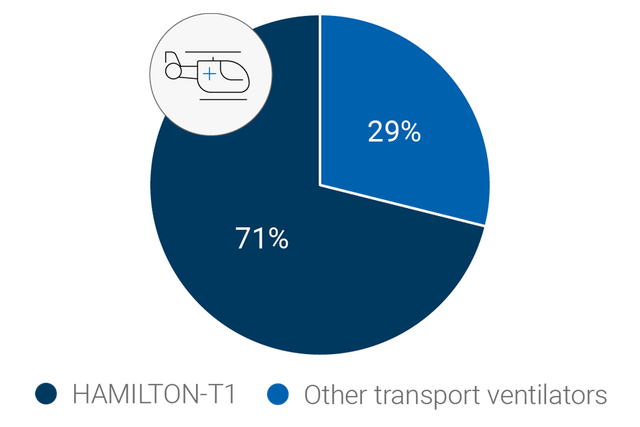
La opción preferida. Para el 71 % de los helicópteros de cuidados intensivos
El HAMILTON‑T1 es el respirador de transporte para ambulancias, helicópteros, etc. de elección de muchos equipos de rescate. Según revela la encuesta HOVER (

No se limite a cumplir las normas. Supérelas
Los respiradores diseñados para pandemias y grandes catástrofes deben ser versátiles y cumplir diferentes requisitos. El HAMILTON‑T1 cumple o supera todos los requisitos de la directrices de la AARC para la adquisición de respiradores que satisfagan la demanda en una pandemia de gripe o incidentes con un gran número de víctimas (
¿Le gustaría saber más?
Explore el modelo 3D
Descubra el HAMILTON‑T1 desde todos los ángulos y haga clic en los puntos de información para obtener más detalles.
Para información rápida
- Estándar
- Opcional
- No disponible
| Grupos de pacientes | Adultos/pediátricos, neonatos |
|---|---|
| Dimensiones (ancho x largo x alto) | 320 x 220 x 270 mm (unidad de ventilación) 630 x 630 x 1380 mm (sin mango) 630 x 630 x 1433 mm (con mango) |
| Peso | 6,5 kg 18,5 kg con carro |
| Resolución y tamaño del monitor | 214 mm, diagonal 640 x 480 píxeles |
| Monitor desmontable | |
| Tiempo de funcionamiento de la batería | 4 h con una batería 8 h con dos baterías |
| Batería intercambiable en funcionamiento | |
| Suministro de aire | Turbina integrada |
| Conector O2 | DISS (CGA 1240) o NIST |
| Conectividad | CO2/llamada de enfermera/COM1, CO2/SpO2/COM1, CO2/SpO2/humidificador y COM1, puerto USB, puerto Ethernet RJ‑45 |
| Volumen | 43 dB en funcionamiento normal |
| Control por flujo y por volumen | |
|---|---|
| Volumen objetivo, control por presión adaptable | |
| Ventilación inteligente | ASV®, INTELLiVENT®‑ASV® (opcional) |
| Ventilación no invasiva | |
| Flujo alto | |
| Visualización de la mecánica pulmonar (Pulm. dinámico) | |
|---|---|
| Visualización de la dependencia del respirador del paciente | |
| Medición de la presión esofágica | |
| Capnograma | |
| Monitorización de SpO2 |
| Evaluación de reclutamiento y reclutamiento pulmonar (P/V Tool Pro) | |
|---|---|
| Sincronización paciente‑respirador (IntelliSync+) | |
| Ventilación de RCP | |
| Módulo Hamilton Connect |
| Conexión remota al humidificador HAMILTON‑H900 | |
|---|---|
| Controlador de la presión del manguito IntelliCuff integrado | |
| Nebulizador neumático integrado | |
| Nebulizador Aerogen integrado | |
| Compatibilidad con el sistema de administración de anestésicos Sedaconda ACD‑S |
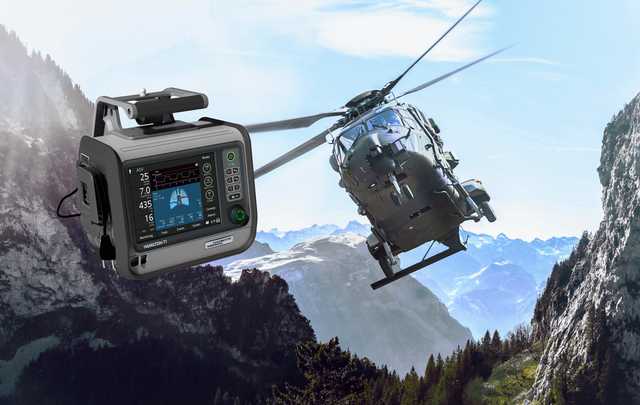
La llamada del deber. El respirador de las Fuerzas Armadas
La exposición a condiciones extremas significa que un respirador para las Fuerzas Armadas debe cumplir requisitos muy especiales. Ahí es donde entra en acción el HAMILTON‑T1 para las Fuerzas Armadas.
Para sus pacientes
Soluciones de ventilación inteligente de un vistazo
ASV®: Adaptive Support Ventilation®. Para la adaptación constante del suministro
El modo de ventilación ASV ajusta de forma continua la frecuencia respiratoria, el volumen tidal y el tiempo inspiratorio respiración a respiración en función de la mecánica pulmonar y los esfuerzos del paciente las 24 horas del día, desde la intubación hasta la extubación.
INTELLiVENT®‑ASV. Para la asistencia a pie de cama
El modo de ventilación inteligente INTELLiVENT‑ASV controla continuamente la ventilación y la oxigenación del paciente.
Define la ventilación por minuto, así como los valores de PEEP y de oxigenación en función de los objetivos fijados por el médico y los datos fisiológicos del paciente.
Nebulizador integrado. Para tratamientos adicionales
El nebulizador neumático integrado está totalmente sincronizado con los tiempos de inspiración y espiración.
Un nebulizador Aerogen integrado y sincronizado está disponible opcionalmente (
El suministro de una ligera nube de partículas medicamentosas en aerosol le ayuda a revertir el broncoespasmo, mejorar la eficiencia de la ventilación y reducir la hipercapnia (
Terapia de cánulas nasales de flujo alto. Para fanáticos del O2
La terapia de cánulas nasales de flujo alto (
Ventilación de RCP. Para personas que salvan vidas
La ventilación RCP adapta la configuración del respirador durante la reanimación. Permite el funcionamiento de RCP con acceso rápido a los ajustes preconfigurables, ajuste adecuado de alarma y disparo, y visualización del temporizador de RCP.
Los principales parámetros y curvas de monitorización relevantes para la ventilación de RCP también se muestran.
Capnografía volumétrica. Para CO2ntrol Freaks
La medición del flujo proximal y del CO2 permite a nuestros respiradores realizar novedosas capnografías volumétricas, lo cual es fundamental para la valoración de la calidad de la ventilación y la actividad metabólica.
Panel Estado ventil. Para aquellos listos para el destete
En el panel Estado ventil., aparecen seis parámetros relacionados con la dependencia del paciente del respirador, incluidas la oxigenación, la eliminación de CO2 y la actividad del paciente.
Un indicador flotante se mueve hacia arriba y hacia abajo en cada columna para mostrar el valor actual de un parámetro determinado.
Acceso remoto al humidificador. Para su comodidad
La exclusiva opción de conectividad del respirador le permite utilizar el humidificador HAMILTON‑H900 (
El humidificador también puede elegir automáticamente el modo de humidificación (invasiva, no invasiva o de flujo alto) en función del modo de ventilación seleccionado.
Válvula para hablar. Para parlanchines
La opción de válvula para hablar da voz a los pacientes traqueotomizados y les permite tragar incluso mientras reciben soporte respiratorio.
La gestión de alarmas, la activación y la monitorización del respirador se han ajustado para admitir las válvulas para hablar en los modos controlados por presión (PCV+, ESPONT, PSIMV+).
Destete rápido. Para los independientes
La función Destete ráp. está integrada en el modo INTELLiVENT‑ASV y proporciona monitorización y control del estado del paciente de manera dinámica y continua para evaluar si el paciente está preparado para la extubación.
Panel Pulm. dinámico. Para personas con perspectiva visual
El panel Pulm. dinámico muestra una representación gráfica en tiempo real de los siguientes datos de monitorización importantes:
- Compliance y resistencia
- Activación por parte del paciente
- SpO2
- Frecuencia de pulso
Bucles y tendencias configurables. Para estadísticos
El respirador puede mostrar un bucle dinámico en función de una combinación seleccionada de parámetros monitorizados. Con la función Tendencias, puede ver la información de tendencias que se muestra para los parámetros de monitorización durante el tiempo que usted seleccione.
El dispositivo almacena continuamente los parámetros monitorizados en su memoria, incluso cuando está en Standby.
Pulsioximetría. Para entusiastas de la SpO2
La opción SpO2 ofrece una medición de SpO2 no invasiva integrada y muestra los datos en el respirador para que pueda analizarlos cómodamente.
También ofrecemos una completa gama de sensores de SpO2.
Ventilación no invasiva de alto rendimiento. Para los que llevan mascarilla
Los modos de ventilación no invasiva ofrecen respiraciones espontáneas con ciclos de flujo y presión de soporte (modos NIV y NIV‑ST) y respiraciones obligatorias cicladas por tiempo y controladas por presión (NIV‑ST).
En comparación con los respiradores que utilizan aire comprimido, nuestros respiradores accionados por turbina son capaces de proporcionar flujos máximos elevados, lo que garantiza un rendimiento óptimo incluso con fugas importantes.
Modos nCPAP. Para los más pequeños
Los modos nCPAP están diseñados de tal manera que solo tendrá que fijar la presión CPAP que desee y, a continuación, se ajustará el flujo en función del estado del paciente y las posibles fugas. Así se evitan presiones máximas involuntarias, se garantiza una compensación eficaz de las fugas y se ayuda a reducir el consumo de oxígeno. El ajuste del flujo se lleva a cabo casi inmediatamente gracias a que la medición es altamente sensible.
Para usted
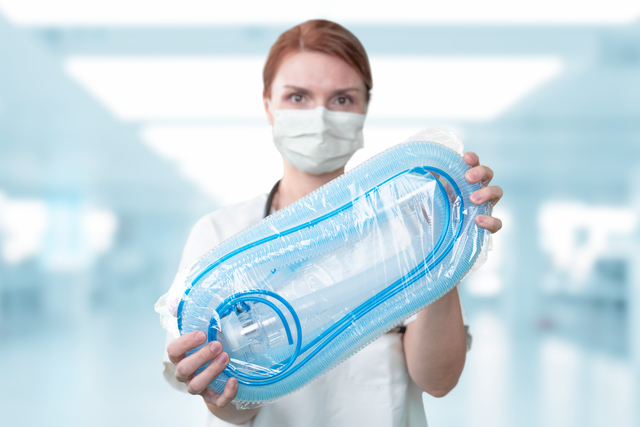
Premontado. Listo para usar
Nuestros equipos respiratorios premontados incluyen el material fungible esencial para utilizar el respirador, cómodamente empaquetado en una única bolsa.
Todo nuestro material fungible esencial se ha desarrollado especialmente para los respiradores de Hamilton Medical con garantía de calidad del fabricante.

Menos pulsadores que girar. Más adaptaciones para los pacientes
Para gestionar la ventilación, suele ser necesario configurar diversos parámetros, como la presión, el volumen, el disparo espiratorio e inspiratorio y la presión de manguito, entre muchos otros. Cada vez que cambia el estado del paciente, hay que realizar uno o incluso varios reajustes.
Para simplificar este proceso y reducir el uso de los pulsadores, hemos creado toda una gama de soluciones:
La ventilación asistida adaptable (ASV) es un modo de ventilación que adapta de forma continua la frecuencia respiratoria, el volumen tidal y el tiempo inspiratorio en función de la mecánica pulmonar y el esfuerzo del paciente. Se ha demostrado que ASV reduce la duración de la ventilación mecánica en varias poblaciones de pacientes con menos ajustes manuales (
Nuestro modo de ventilación inteligente INTELLiVENT‑ASV le permitirá olvidarse prácticamente de girar los pulsadores y limitarse a supervisar los datos, reduce el número de interacciones manuales con el respirador (
Las soluciones convencionales para la gestión de la presión del manguito requieren que monitorice y ajuste la presión del manguito a mano.
IntelliCuff garantiza el control de la vía aérea del paciente (
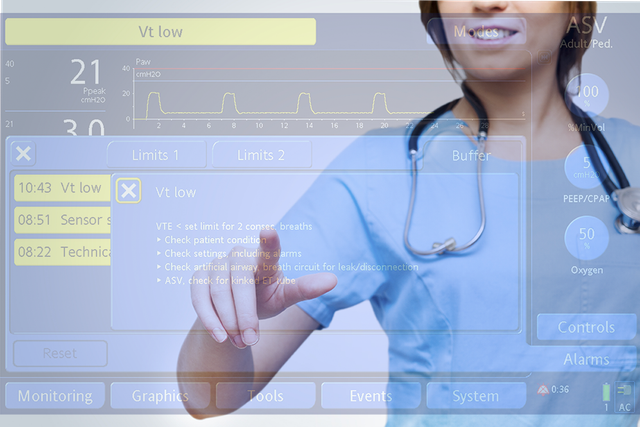
La asistencia está en camino. Ayuda en pantalla para solución de problemas
Siempre que hay un problema, el respirador le alerta con la señal luminosa de alarma, la señal acústica y la barra de mensajes.
La ayuda en pantalla le ofrece sugerencias sobre cómo resolver la alarma.
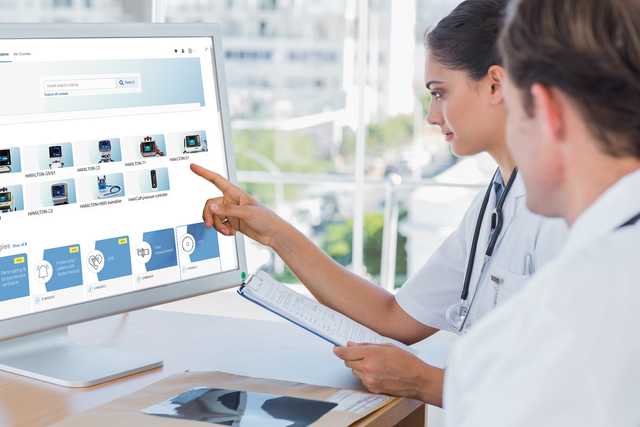
¡Cójale el truco! Rutas de aprendizaje y contenido educativo
Nuestra Academy en línea le ofrece rutas de aprendizaje fáciles de seguir para familiarizarse con las tecnologías y los productos de Hamilton Medical lo antes posible.
Para el futuro

Evolución constante. Ampliamos las capacidades de su respirador
Trabajamos continuamente para seguir desarrollando nuestros productos. Añadimos nuevas funciones y mejoramos las características actuales para garantizar que siempre tiene acceso a la última tecnología en ventilación a lo largo de toda la vida útil de sus respiradores.


Conozca una y las conocerá todas. Interfaz de usuario universal
No importa si se utilizan en la UCI, la sala de RM o durante los traslados, todos los respiradores de Hamilton Medical funcionan de la misma forma.
Nuestro Ventilation Cockpit (cuadro de control de la ventilación) integra datos completos en visualizaciones intuitivas.
Para la solución completa
Accesorios totalmente integrados
Desarrollamos nuestros accesorios para que pueda brindar la máxima seguridad posible a los pacientes teniendo en mente en todo momento la facilidad de uso. En la medida de lo posible, los integramos en nuestros respiradores para simplificar el funcionamiento de todo el sistema del respirador.
Nuestro material fungible

Hable con nuestros expertos. Hablemos de sus necesidades
Nuestro equipo de expertos en ventilación estará encantado de ayudarle a elegir el ventilador perfecto para su entorno clínico y ayudarle a alcanzar sus objetivos terapéuticos. Solicite un presupuesto personalizado o una llamada para obtener más información.
Más información
HAMILTON‑T1 folleto Software version 3.0.x
HAMILTON‑T1 Especificaciones técnicas de SW 3.0.x
Hamilton Connect folleto
HAMILTON‑T1 ‑ Required ventilator capabilities for pandemics or mass casualties
Hamilton Medical Una solución para cualquier situación
Transport and storage solutions for HAMILTON‑C1/T1/MR1
El nuevo HAMILTON‑C1/T1/MR1 SW3.0.x folleto
Referencias
- 1. Hilbert‑Carius, P., Struck, M.F., Hofer, V. et al. Nutzung des Hubschrauber‑Respirators vom Landeplatz zum Zielort im Krankenhaus. Notfall Rettungsmed 23, 106‑112 (2020).
- 2. Kirakli C, Naz I, Ediboglu O, Tatar D, Budak A, Tellioglu E. A randomized controlled trial comparing the ventilation duration between adaptive support ventilation and pressure assist/control ventilation in medical patients in the ICU. Chest. 2015;147(6):1503‑1509. doi:10.1378/chest.14‑2599
- 3. Tam MK, Wong WT, Gomersall CD, et al. A randomized controlled trial of 2 protocols for weaning cardiac surgical patients receiving adaptive support ventilation. J Crit Care. 2016;33:163‑168. doi:10.1016/j.jcrc.2016.01.018
- 4. Zhu F, Gomersall CD, Ng SK, Underwood MJ, Lee A. A randomized controlled trial of adaptive support ventilation mode to wean patients after fast‑track cardiac valvular surgery. Anesthesiology. 2015;122(4):832‑840. doi:10.1097/ALN.0000000000000589
- 5. Arnal JM, Garnero A, Novotni D, et al. Closed loop ventilation mode in Intensive Care Unit: a randomized controlled clinical trial comparing the numbers of manual ventilator setting changes. Minerva Anestesiol. 2018;84(1):58‑67. doi:10.23736/S0375‑9393.17.11963‑2
- 6. Bialais E, Wittebole X, Vignaux L, et al. Closed‑loop ventilation mode (IntelliVent®‑ASV) in intensive care unit: a randomized trial. Minerva Anestesiol. 2016;82(6):657‑668.
- 7. Fot EV, Izotova NN, Yudina AS, Smetkin AA, Kuzkov VV, Kirov MY. Automated Weaning from Mechanical Ventilation after Off‑Pump Coronary Artery Bypass Grafting. Front Med (Lausanne). 2017;4:31. Published 2017 Mar 21. doi:10.3389/fmed.2017.00031
- 8. Arnal JM, Saoli M, Garnero A. Airway and transpulmonary driving pressures and mechanical powers selected by INTELLiVENT‑ASV in passive, mechanically ventilated ICU patients. Heart Lung. 2020;49(4):427‑434. doi:10.1016/j.hrtlng.2019.11.001
- 9. Chenelle CT, Oto J, Sulemanji D, Fisher DF, Kacmarek RM. Evaluation of an automated endotracheal tube cuff controller during simulated mechanical ventilation. Respir Care. 2015;60(2):183‑190. doi:10.4187/respcare.03387
- 100. Dhand R. New frontiers in aerosol delivery during mechanical ventilation. Respir Care. 2004;49(6):666‑677.
- 101. Waldrep JC, Dhand R. Advanced nebulizer designs employing vibrating mesh/aperture plate technologies for aerosol generation. Curr Drug Deliv. 2008;5(2):114‑119. doi:10.2174/156720108783954815
Notas al pie
- A. Traspaso de pacientes ventilados en helicópteros de servicios de emergencia médica (HEMS) a la sala de urgencias
- B. https://www.aarc.org/wp‑content/uploads/2020/03/ventilator‑acquisition‑issue‑paper.pdf
- D. El HAMILTON‑H900 no está aprobado para su uso durante traslados.
- a. No disponible en todos los mercados
- b. Disponible solo para HAMILTON‑C6/G5/S1
- f. También conocida como terapia con flujo alto de oxígeno. Esta terminología se puede usar indistintamente junto con terapia de cánulas nasales de flujo alto.


